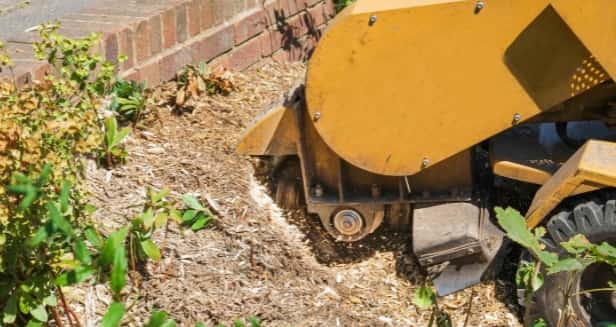Subsidence is a serious concern for homeowners, particularly those living in older properties with shallow foundations. One of the most overlooked causes of subsidence is tree-related ground movement. As roots grow and extract moisture from the soil, particularly in clay-rich areas, they can contribute to soil shrinkage and ground instability. At Bishop’s Stortford Tree Surgeons, we provide professional tree surgery services throughout Bishop’s Stortford, Essex to help mitigate these risks and protect the long-term integrity of residential properties.
Understanding the relationship between trees, soil conditions, and older home foundations is essential for effective prevention and responsible tree management.
What Is Subsidence and Why Does It Matter?
Subsidence occurs when the ground beneath a property sinks, causing the building’s foundations to become misaligned. This results in:
- Cracks in walls and ceilings
- Doors and windows sticking or misaligning
- Uneven floors or sloping surfaces
- Structural instability and long-term damage
Older homes are particularly vulnerable due to their shallower, less reinforced foundations and susceptibility to soil movement.
How Trees Contribute to Subsidence
Trees and large shrubs near a building can significantly impact the stability of the surrounding soil. The main causes include:
1. Water Extraction from Soil
Tree roots absorb water from the surrounding ground, especially during dry periods.
- In clay soils, this can cause shrinkage and subsidence
- Extended drought combined with active root systems worsens the effect
- Soil moisture imbalance increases foundation movement
2. Root Expansion
As roots grow in search of moisture, they can:
- Spread towards building foundations
- Cause displacement of soil and pressure against structural elements
- Lead to differential settlement, where part of a property moves more than another
3. Changes in Tree Size or Type
Planting larger trees too close to a property—or removing trees too suddenly—can trigger subsidence.
- Rapid canopy growth increases moisture demand
- Tree removal may cause the soil to swell (heave), resulting in movement in the opposite direction
This is why careful tree surgery and root management are crucial in established residential areas like Bishop’s Stortford, Essex.
The Role of Tree Surgery in Preventing Subsidence
Professional tree surgery can significantly reduce the risk of tree-induced subsidence through a combination of controlled techniques, long-term planning, and responsible care.
1. Root Management
Managing the root zone around a property is key to maintaining ground stability.
- Root pruning reduces moisture uptake without killing the tree
- Root barriers can be installed to guide growth away from foundations
- Regular inspections allow early identification of root encroachment
At Bishop’s Stortford Tree Surgeons, we use safe, effective root zone practices that balance tree health with building protection.
2. Crown Reduction and Canopy Management
Reducing the size and density of a tree’s canopy helps to control its water demands.
- Less foliage means lower transpiration and water uptake
- Reduces the load on the root system, especially in dry months
- Helps maintain a healthy tree at a manageable size
This method is particularly effective for species with high water consumption such as willows, poplars, and oaks.
3. Tree Selection and Spacing Advice
We provide expert advice on appropriate tree types and planting distances to reduce future subsidence risks.
- Recommending low-water-demand species for close planting
- Advising on minimum planting distances from buildings
- Planning for long-term growth and environmental changes
For older homes in Bishop’s Stortford, Essex, proactive tree placement is just as important as reactive surgery.
4. Gradual and Managed Tree Removal
If a tree must be removed due to its impact on the soil or structure, doing so in a controlled manner is essential.
- Reduces the risk of soil heave from sudden moisture changes
- Allows the ground to adapt gradually
- May require staged removal over months or years
We always assess soil type, weather patterns, and building sensitivity before recommending removal.
Signs You May Need Tree Surgery to Prevent Subsidence
If you live in Bishop’s Stortford and have an older property near mature trees, look out for the following signs:
- Cracks appearing in internal or external walls
- Tree roots visibly encroaching towards the house
- Doors or windows becoming stiff or misaligned
- Trees planted within 10 metres of the structure
- Changes in soil condition, such as drying or cracking during summer
Early intervention can prevent costly structural repairs and preserve the surrounding landscape.
Why Choose Bishop’s Stortford Tree Surgeons?
We specialise in responsible, strategic tree surgery across Bishop’s Stortford, Essex, offering:
- In-depth site assessments and root zone analysis
- Long-term tree maintenance plans for homeowners and developers
- Skilled crown reduction, thinning, and pruning techniques
- Safe, staged tree removal where required
- Transparent advice tailored to both tree health and property protection
Our work is carried out with full consideration of building regulations, planning permissions, and tree preservation orders (TPOs) where applicable.
Conclusion
Trees and homes can coexist harmoniously, but only with careful planning and ongoing management. For older homes in Bishop’s Stortford, Essex, the risk of subsidence caused by nearby trees is real—but entirely manageable with the right approach. At Bishop’s Stortford Tree Surgeons, we provide the knowledge, expertise, and services needed to reduce that risk and maintain both your property’s structural stability and the health of your landscape. Contact our team today for an expert consultation and ensure your trees are an asset—not a liability—to your home.
Call us on: 01279 744 495
Click here to find out more about Bishop’s Stortford Tree Surgeons
Click here to complete our contact form and see how we can help with your tree care needs.

